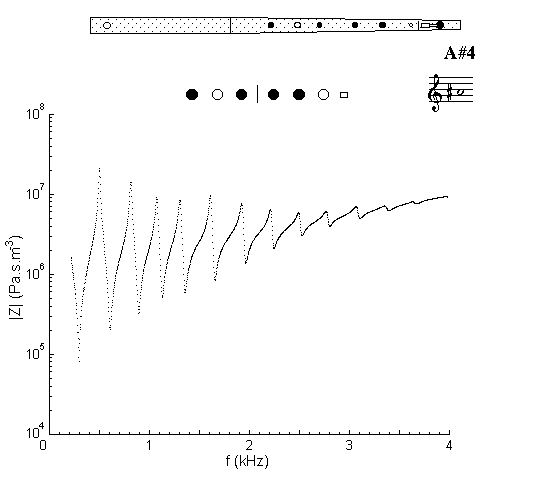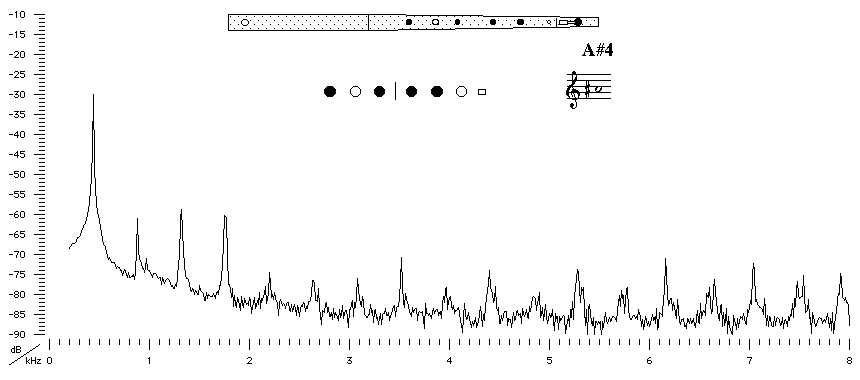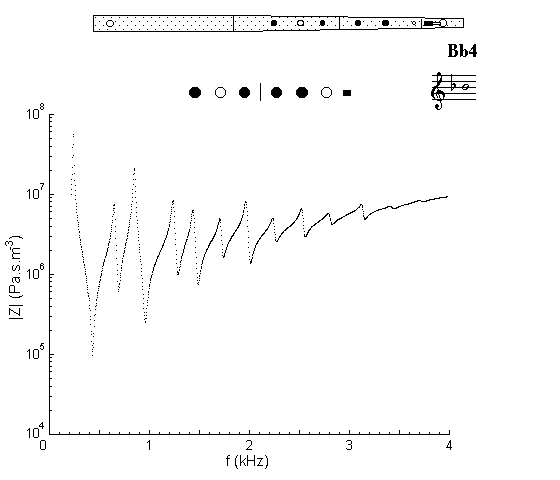| Acoustics of baroque, classical and modern flutes |
baroque flute |
A#4 and Bb4 |

|
Acoustic and Fingering Schematic Non-specialist introduction
to acoustic impedance |
This is a severe cross fingering: three holes closed (including the key) below one open. As a result, even the second minimum is very flat (this fingering cannot be used for A#5) and so the second and subsequent harmonics in the sound spectrum below are weak, hence a very dark timbre. For more detail on cross fingering see that section in the introduction to flute acoustics, or download a brief scientific report on cross fingerings. (This note must be lipped down.)

Sound spectrum
of a baroque flute played using fingering for A#4.
![]()
![]()
![]()
![]() You can hear A#4
played by Matthew Ridley.
You can hear A#4
played by Matthew Ridley.
Bb4 Fingering |
baroque flute |
 |
Acoustic and Fingering Schematic Non-specialist introduction
to acoustic impedance |
Impedance spectrum of a baroque flute measured at the embouchure hole using fingering for Bb4.
Depressing the key and opening its hole raises the frequency of the first minimum slightly, and hence sharpens A# slightly to Bb. Again the impedance spectrum is inharmonic, so the spectrum is weak at high frequencies and the timbre is dark.

Sound spectrum
of a baroque flute played using fingering for Bb4.
![]()
![]()
![]()
![]() You can hear Bb4 played by Matthew Ridley.
You can hear Bb4 played by Matthew Ridley.
| Acoustic measurements are available for these flutes - modern B, modern C, classical C, classical D, classical flared, baroque Sound clips are available for modern B, classical flared and baroque |
To compare flutes, it is easiest to open a separate browser window for each instrument. |